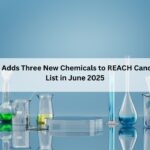The “In Vitro Diagnostic Regulation” (IVDR) is a new regulation by the EU applicable for In Vitro Diagnostic (IVD) Medical Devices. The IVDR came into effect on May 25, 2017, with a five-year transition period for manufacturers and suppliers. The new regulation replaces the In Vitro Diagnostics Directive (IVDD) 98/79/EC.
The new regulation is significant for IVD medical device manufacturers because it introduces a new rule-based classification system and increased notified body involvement. The new classification system will replace the currently practiced list-based approach. The manufacturers need to comply with the new requirements from May 26, 2022, to place their products in the EU market. The products already certified by the notified bodies have a period until May 25, 2024.
The manufacturers of In Vitro Diagnostic Medical devices need to manage requirements as per the new update to get their products CE-Marked under the new regulation. The regulation allows more time for the transitions if required because of the increased number of devices in the market, reviews by notified bodies, and the ongoing need to interpret some regulatory provisions.
The prominent changes introduced in the new IVDR (EU 2017/746) are:
- Reclassification of devices: Devices will be reclassified according to the risks, ranging from Lower risk; class A – Higher Risk- class D.
- More clinical evidence: Manufacturers need to conduct more clinical studies and provide safety and performance evidence, as per the risk category.
- Expanded product scope: This will cover diagnostic services (including internet -based), genetic testing and other tests that gives a patient’s information on specific disease or susceptibility.
- No Grandfathering Provisions: All the currently approved devices must be recertified as per the new regulatory requirements.
- Premarket approval approach for self-testing and near patient testing devices.
- Identification of “person responsible for regulatory compliance”.
- Documentation to become more stringent with Rigorous surveillance by Notified bodies.
- Implementation of Unique device identification is a must, for traceability.
- Post market surveillance requirement will be increased and general timeline for reporting is reduced.
- Greater Scrutiny of Notified body
The In Vitro Diagnostic Medical Device development is highly complex and makes their transition period even more complicated and time-consuming. We at ComplianceXL, Simplify Compliance by providing comprehensive solutions that cover consulting, compliance strategy, training, and documentation to ensure your medical devices comply with applicable regulations across the globe.
Talk to one of our Medical Devices Regulation Specialists today!





